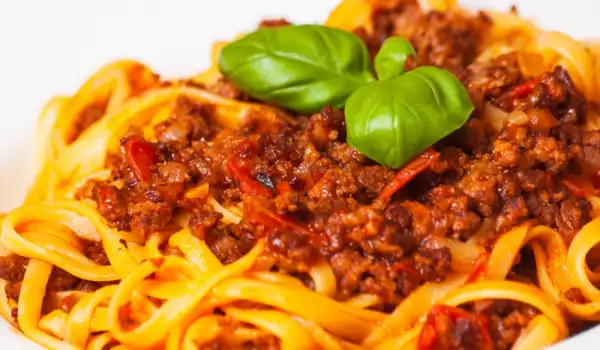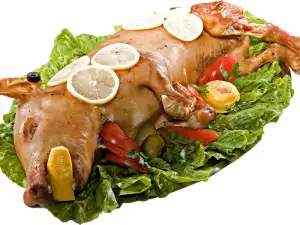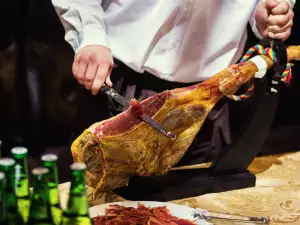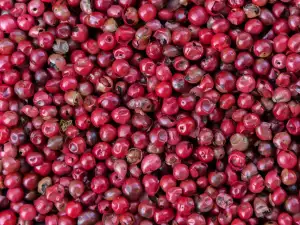An excellent alternative to meat is soy. This product has long been widely used by vegetarians and people who lead a healthy lifestyle.
Before you include soy mince in your menu, you should learn more about it - benefits, harms and most importantly - contraindications.
Soy mince is an indispensable product in the diet of vegetarians. It can literally replace animal protein for such people.
Health benefits of consuming soy mince
- Beneficial effect on intestinal microflora;
- Regulation of the central nervous system;
- Prevention of diseases of the heart and blood vessels;
- Recovery of brain cells;
- Positive effect on the ability to concentrate and remember;
- Gradual elimination of heavy metals and radionuclides from the body. Due to this property of soy meat, its use is equated with a dialysis procedure (blood purification);

- Prevention of osteoporosis;
- Strengthening immunity;
- Prevention of early signs of aging;
- Inhibition of the development of cancer cells;
- Regulation of the menstrual cycle in women;
- Alleviation of menopause symptoms.
It is worth noting that soy meat during cooking increases in volume by two and sometimes three times. That is why you should not add too much dry cooking product.
If you decide to eat soy mince regularly, then do not forget to monitor its amount in your diet. Women are recommended to consume 100 g of the product three times a week. For men, the norm is different: 100 g at most once every seven days, because soy consumption is associated with the secretion of female hormones.
It is also worth remembering that you should eat dishes with soy mince at least 4 hours before going to bed.
It is not recommended to give soy meat to children because the product contains isoflavones that have a negative effect on the hormonal background of a growing organism. This is especially true for girls.
In addition, due to the high concentration of isoflavones, which strongly affect the hormonal background, soy should not be consumed by pregnant women.
Cooking soy mince
As we have already specified, soy mince is an alternative to the classic animal minced meat. Therefore, you can use it in most recipes where you would need to add minced meat. So, for example, you can prepare vegetarian moussaka by adding the usual eggplants, zucchini, tomatoes, potatoes and topping in addition to the soy product.
An option is to also make a sauce for spaghetti with soy mince. You will make the favorite Spaghetti Bolognese or just the equivalent of improvised spaghetti with minced meat.
Do you like stuffed eggplant with minced meat and zucchini with minced meat? Well, we have to tell you that even in these recipes you can still bet on the soy product. The same goes for the minced meat filo pastry pie. Or sauerkraut with minced meat.
But there is one peculiarity. Before you start cooking soy mince, you should familiarize yourself with some tips. You can read exactly how to process soy mince before putting it in the oven, for example, on the product packaging itself.
Soy mince is easy to use and a cheap source of protein. Soy mince is made from soybean flour and can be left unflavored or seasoned with curry, black pepper, allspice, cumin, garlic, onion, and/or red wine to mimic chicken, sausage, or ground beef. You can buy dried soy mince in packets. You will find it in almost any large market or specialized stores for healthy eating and vegetarianism.

Here is an example of how to process soy mince:
Step 1
3/4 cup to 1 cup of ready-made vegetable stock (or water with diced vegetable broth in it) is boiled on the stove or in the microwave.
Step 2
Pour the boiling vegetable broth over 1 cup of soy granules. Cover the dish and set it aside for a few minutes to moisten well and swell.
Step 3
Season the soy mince as desired. Use prepackaged grill seasoning mix, chicken, barbecue, garlic and onion mix, or your favorite seasonings.
Step 4
Add soy mince to recipes by using it in spaghetti sauce, tacos, casserole or other favorite dishes. It is suitable for any aromatic sauces.
Step 5
Use soy mince like normal animal minced meat. Refrigerate and use within a few days or freeze for future consumption.
What else should we know about soy products?
All of the potential soy benefits come with an important warning: To get them, you need to choose minimally processed forms of soy — think tempeh, tofu, miso and edamame.
These foods serve up the entire nutritional package of soy without the added sugar, unhealthy fats, sodium, or preservatives that you commonly find in highly processed foods.
Soy sausages such as meat analogs, soy bars, soy yogurts or protein powders usually contain only soy protein isolates and not nutrients from the whole soy. Just like other processed foods are lower in nutrient density.
Stripping protein of the remaining enzymes and bacteria needed for digestion affects nutritional quality, says Dr. Taz Bhatia, MD and author of What Doctors Eat.
How often should you eat soy? As with all foods, moderation is the way to go. In general, three to five servings of minimally processed soy foods per week is perfectly fine, says Bhatia. If you're not sure or have a health problem (such as hypothyroidism), ask a doctor the next time you discuss your diet.
Depending on what you eat every day, soy foods like tofu, soy milk, miso, tempeh, and edamame may sound like classic health foods. But for vegetarians, vegans and others who rely on this common meat alternative, soy-rich foods have gained a controversial reputation. Some previously published research can be downright scary, with claims that increased soy consumption can mess with your hormones, your thyroid and possibly cause cancer. Modern research refutes these rumors and adds that moderate consumption of soy is rather beneficial. However, scientists do not hide that research on soy will continue in the future.




















Comments